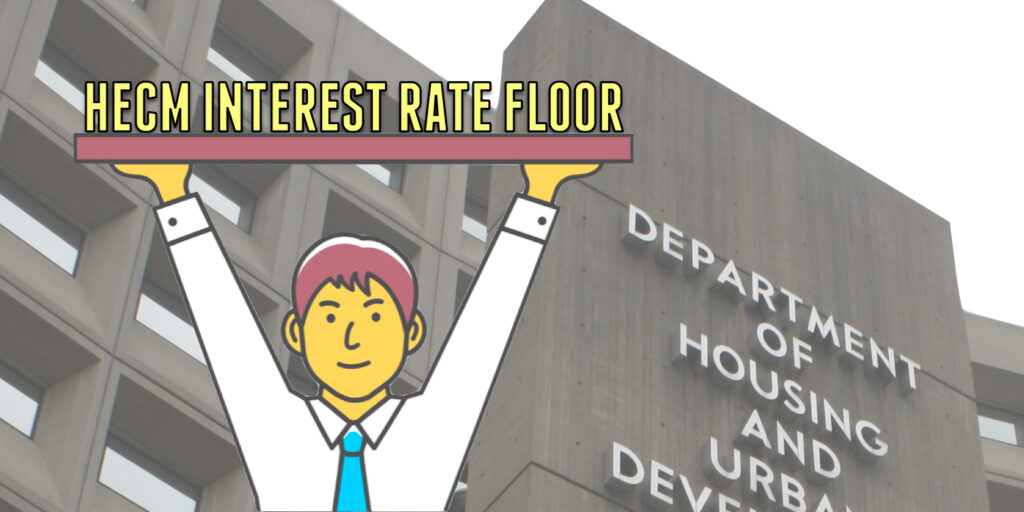Where we stand
It’s not just the housing market that’s poised for a big shift. So is reverse mortgage lending. While industry participants have typically concerned themselves with potential changes to the federally-insured Home Equity Conversion Mortgage program or state regulations another sea change is approaching the horizon.
There’s an old investing adage that says, “don’t fight the Fed”. In other words, wise investors align their financial decisions with the current monetary policy of the Federal Reserve. Mortgage originators of all stripes did just that. Mortgage lenders certainly did.
For the last two…
Read More
years refinance transactions have been the rage as the central bank slashed interest rates in the effort to stave of a recession due to Covid-19 shutdowns and stay-at-home orders. However, by late April after a series of rate hikes by the Fed, mortgage refinance volume collapsed to 68% less than it was one year ago. Can we expect the same for HECM refinances? Quite honestly it’s too early to tell. FHA’s March HECM snapshot shows that 48% of all HECM transactions were for refinances. In the same month, 40% of FHA case number assignments for submitted HECM applications were for HECM-to-HECM refinances. What’s notable is that are nearly 10% fewer applications for a refinance than in January of this year and that may actually be good news. In March traditional non-refinance and purchase applications accounted for 59% of all case number assignments. That’s a notable increase from January when only 50% of case numbers were for traditional and purchase HECM applications. Anecdotally this seems to indicate with fewer refinance opportunities available originators returned their focus to finding new first-time HECM borrowers. To even the casual observer it’s quite obvious that rising interest rates and flattening home values will splash a modest amount of cold water on both traditional and mortgage lending volumes. However, reverse mortgage professionals have a unique advantage over traditional mortgage lenders. While unfortunate, inflation will thwart the ability of many middle-aged Americans to adequately save for retirement. While retirement deposits decline home equity will continue to accrue with the forced-savings plan which required mortgage payments require; all to the homeowner’s benefit; a benefit which they may be able to tap into using a reverse mortgage. It would be both prudent and desirable to see non-refinance HECM volume continue to increase to replace what was once a reliable source of funded loans. After all, like the seasons bring hotter days and chilly nights, HECM refinances will become the notable exception rather than the rule. Despite rising rates and uncertain home values, our turbulent economy is increasing the necessity for additional cash flow. And that is where we ultimately stand.










5 Comments
Do you think there is any chance of that happening?
I’m not sure Jim, but I’m feeling positive that HUD will respond to rapidly-rising interest rates as they have to declining rates in the past.
Shannon, thank you for broaching this subject.
It is time to take a strong look at those 10/2 adjustments as they have so “fondly” been called over the last 56 plus months. The last change to the PLFs (Principal Limit Factors) were announced on 8/29/2017 in Mortgage Letter 2017-12 which became effective on 10/2/2017. BUT not only were the PLFs changed but so were upfront and going MIP (Mortgage Insurance Premiums). Those adjustments have resulted in a large loss in HECM closings and endorsements. Were they necessary?
For some, the remainder of this comment will be like speaking Greek to those who only know French. Yet it is particularly in Table 6 of the actuary’s review of the HECM portion of the MMIF for HUD’s fiscal year ended 9/30/2021 that we see what cohorts of endorsed HECMs are expected to result in a negative or a positive cash flow. The HECMs endorsed in fiscal years 2009 and 2010 are expected to result in materially negative large cash flows. It is expected that fiscal year 2011 will end in an immaterial cash flow loss.
Fiscal years 2012 and 2013 are expected to result in immaterial amounts of positive cash flow. The fiscal years of large material positive cash flow are expected to be from 2014 through 2017. The fiscal years following 10/2/2017 changes are expected to result in modest positive cash flows.
In other words, Schedule 6 is saying that the 10/2/2017 changes resulted not only in much smaller positive cash flow expectations but experientially, they also resulted in much lower HECM endorsement volume. Recently on a video, one industry leader quietly commented that he wished the PLFs would change. It is my belief that both PLFs and MIP should be returned to what they were on 10/1/2017 except upfront MIP should be 1.5% and ongoing MIP 0.9%.
Shannon’s idea of restoring the PLF floor as it was on 10/1/2017 is a great suggestion but it falls short of what needs to be done to turn HECM endorsement volume around especially as the industry begins to see both HECM Refi endorsements and total HECM endorsements begin to be knocked down.
This presentation totally confused me.
are you saying that the higher floor rate had larger plf’s and couldn’t the lower floor rate also have higher plf’s?
Not clear based on what you explained
We need a do over on this one
Guy,
What happens if the floor rate increases above 5.0626% (Shannons proposal) is that the same PLFs that apply at all expected interest rates starting at 3.0626% will only apply after the floor reaches 5%. The highest PLFs available now only occur with expected interest rates less than 3.0626% which if changed as Shannon describes would apply to all expected interest rates below 5.0626%.
Now PLFs begin to decrease when an expected interest rates reaches 3.0626% and under Shannon’s suggestion lower PLFs would not begin until the expected interest rate reaches 5.0626%. So whatever PLF applies today, that same PLF would apply at that same expected interest rate PLUS 2%. under Shannon’s proposal. That would mean a much higher PL at an expected interest rate of 6% under Shannon’s proposal than it does today.
I hope that helps.